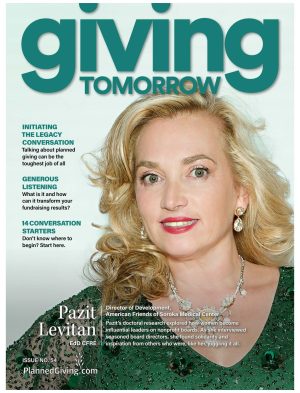There are thousands of fundraising tactics out there—hundreds of ways to find donor, to communicate with them, and to ask them for money. Every organization is different, which means every nonprofit uses a different fundraising strategy.
That being said, there are some things in fund development that are universal. There are some things that every nonprofit can be doing to raise more money and boost their development program. Here are ten ways to boost your nonprofit fundraising strategy, presented in no particular order:
#1: Have a Fundraising Calendar
Too many organizations have a basic cadence for their fundraising activities, but aside from that, run their development programs by the seat of their pants. This even includes some larger organizations that are constantly adding new events and letters whenever a fundraiser or board member gets a new idea.
This is a mistake. One of the best ways to boost your nonprofit fundraising strategy over the long-term is to develop a comprehensive fundraising calendar at the beginning of the year. This should include everything you plan to do for the year, including letters, e-mails, crowdfunding campaigns, giving days, etc. Having a fundraising calendar in place will allow everyone on your team to be on the same page and to know what is expected of them for the year to come.
#2: Always Cultivate Before You Ask Again
This is one of the most important rules in fundraising, with the notable exception of low-dollar direct mail donors, who can be asked for small donations over and over again. For most donors, especially mid-level and larger donors, you should always thank, recognize, and cultivate the donor before asking for money again.
One of the basic goals of your nonprofit fundraising strategy is to keep your current donors giving year after year (and giving more next year than this year, if they have the capacity to do so). The only way to do this is to make sure you are cultivating in between each ask.
#3: Make More Asks
Nearly every nonprofit should be making more asks than it currently is. So many organizations worry about asking too much, when in fact they are asking far too infrequently. Of course, your nonprofit shouldn’t be asking most donors for money every two weeks, but if you are stewarding your donors the right way (see rule #2 above), there’s no reason you can’t be asking your donors for money several times per year (or more).
If your nonprofit fundraising strategy doesn’t include multiple asks to each of your donors every year, then you are leaving money on the table.
#4: Focus on Return on Investment (ROI)
One of the biggest keys to success with any nonprofit fundraising strategy is focusing on ROI (return on investment) for each of your fundraising tactics. Your team should be tracking exactly how much you are raising for every dollar and every hour spent on fundraising. This will allow you to make smart decisions about where to focus your organization’s limited resources.
For example, if you’re raising $20,000 from your annual giving day, but it is taking you 100 hours’ worth of staff time to do it, ask yourself if you would raise more or less money if you invested that time into another fundraising strategy. If 100 hours of major donor cultivation nets you $40,000, but 100 hours of giving day work only nets you half that amount, you need to consider cancelling your next giving day to focus on major gifts fundraising.
#5: Make Your E-Mail Newsletter the Backbone of Your Cultivation Efforts
Your organization’s e-mail newsletter can and should be the backbone of your donor cultivation efforts. Your e-mail newsletter is cheap and easy to send, and many donors will look forward to staying in touch with you through your newsletter.
In order to be successful, you should send your e-mail newsletter at least monthly (if not more often). If you don’t send the newsletter at least monthly, it won’t be able to do its job of making your donors feel connected to your work. A good e-mail newsletter, sent regularly, is an essential part of your nonprofit fundraising strategy.
#6: Focus on Going Where the Money Is
As noted above, there are thousands of ways to raise money for your organization. For that reason, many nonprofit fundraisers get distracted and keep trying new strategies, never focusing on those tactics that have the most potential to boost your fundraising.
If you want to develop a strong nonprofit fundraising strategy, you need to focus on going where the money is. First and foremost, that means raising money from individuals. In the United States, Canada, the UK, and most other developed nations, individuals give far more money to nonprofits than corporations or foundations. Second, you should be focusing a significant part of your efforts on major donors, who can give your organization larger gifts than hundreds or thousands of lower-dollar donors combined.
#7: Have an Intentional Donor Acquisition Plan
Every organization needs to have an intentional donor acquisition plan as part of its nonprofit fundraising strategy. This means that every organization needs to think through where it will find new donors, and it needs to invest in that acquisition program.
There are only a few ways to find new donors for your nonprofit: you can send direct mail, you can do online direct response, you can seek referrals from current donors, you can do cold prospecting, or you can focus on networking (or any combination of those strategies). Whatever you decide to do, be intentional about it—develop a prospecting plan and integrate it into your overall development plan.
#8: Think Big
When it comes to your nonprofit fundraising strategy, you need to think big. Far too many organizations set small goals (both for their programs and their fundraising) and then are disappointed when people don’t give. Donors want to give to organizations that are doing big things… they want to feel passionate about your work. It’s hard to get excited or feel passionate about small things.
Have a big vision. Communicate that vision to your donors. And then don’t be bashful about asking them to give large gifts to help you make that vision a reality.
#9: Invest in Fundraising
If you want to raise more money, you need to invest in your fundraising program. That doesn’t mean wasting money, but it does mean spending what it takes to meet your development goals. Far too many organizations say they want to raise 30% more next year… and then invest the exact same amount of money into their fundraising program as they did the year before.
Investing in your fundraising program also includes investing in your people. If you want to supercharge your nonprofit fundraising strategy, the first step is often hiring more fundraisers. Remember, for-profit companies that want to sell more products never do it by cutting the sales staff. The same rule applies for nonprofits. If you want to raise more money, you may need to hire more people.
#10: Focus on Raising More, not on Spending less
There are two ways to increase the bottom line in your nonprofit budget: you can raise more, or you can spend less. I can tell you from personal experience that the best way to do more at your nonprofit is to raise more money, not to focus on cost savings.
If your nonprofit is focused on saving 3% here and 7% there, you’ll never be able to do the “big thinking” that is required to become a prevailing nonprofit. Instead, you’ll be locked into looking at the bottom line and trying to save pennies instead of being free to go out and do more good in the world. If you want to do big things, make sure your nonprofit fundraising strategy is focused on raising more, not on spending less.






